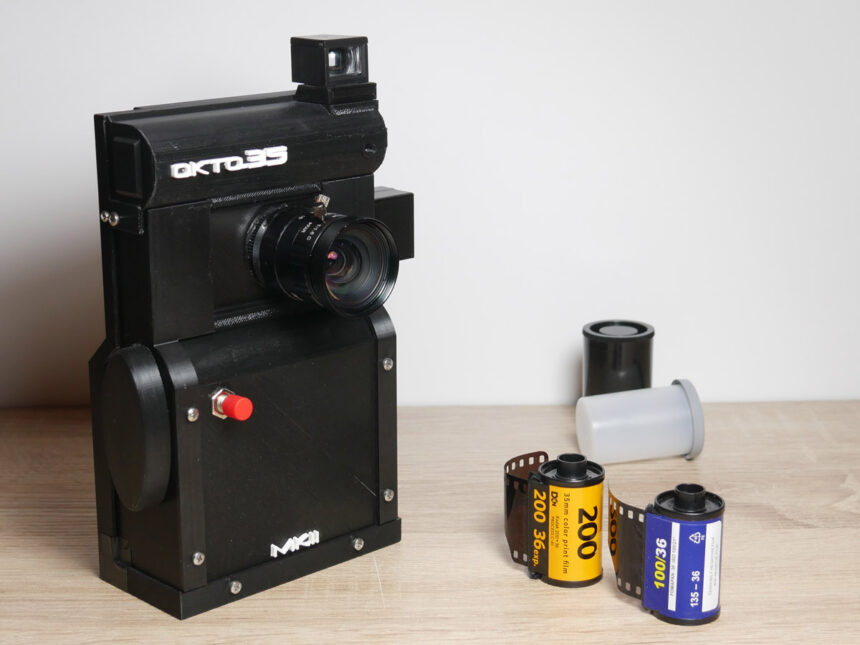Diving into film for movies can be very expensive, especially in the long run. Plus, your camera gear can break down, you might not have the stock of film you need, or you might have to wait a week or more for scanned results to come back. This creates a strong pull back to the digital world, despite your initial attraction to analog. 8mm and Super8 are the cheapest options of the film formats currently available, but they’re still inconvenient solutions.
The OKTO35 camera was created out of frustration with the high costs of shooting, developing and scanning motion picture film. Using his knowledge of electronics and 3D design, he decided to create a unique film camera that could shoot common and readily available 35mm film still rolls. The addition of scanning capability was a game changer as it allowed him to shoot and scan the same roll of film in just a few hours, all from the comfort of his own home.
The camera shoots in a unique way, using a single perforation pulldown method that divides the width of the film into four parallel tracks for a total of 1200 frames per 36-exposure roll of 35mm, equivalent to 1/3 of a 50-foot Super 8 cartridge. This method maximizes the usable film area, producing frames that are slightly larger than Super 8 in a traditional 4:3 aspect ratio. At standard 18fps, shooting time is 1 minute 7 seconds.

The magic happens inside, consisting of a custom printed circuit board, Geneva film advance mechanism, lens shift stepper, solenoid shutter and a rechargeable LiPo battery, all connected by numerous wires and secured in a 3D printed PLA housing. A simple press of the trigger button engages a fully automated film exposure and transport system, ensuring hassle-free camera operation. All of this is electronically controlled by an STM32F1 series ARM microcontroller with custom firmware.

The exterior design is simple and ergonomically designed. With a bright OLED display and joystick buttons, the camera offers a great GUI experience, providing the user with a simple menu system and all the data they need. Loading a film roll consists of a simple drop-and-load procedure, secured by a magnetic film cover. A motorized sliding C-mount thread allows for a wide selection of different lenses, as well as automatic lens shifting to the next film track. A built-in light meter measures the illuminance of the scene and provides a recommended F-stop setting. A simple detachable optical viewfinder with frame slide is used for framing the scene. Additionally, there is a micro USB connector for battery charging, a 1/4-inch tripod mount, and a DSLR connector for synchronous film scanning. A built-in buzzer provides a timer and various warning sounds.

The OKTO35 camera has four operating modes: Video, Photo, Timelapse and Scanner. The last mode acts as a frame scanner for previously shot and developed film rolls. Users can use any common DSLR or mirrorless camera for frame scanning purposes. Here, scanning synchronization is achieved by a shutter release wire connection between the two. Scanning is done automatically with optical transfer between the lenses and in a slow frame-by-frame manner, resulting in good results without flicker or missing frames. The scanned frames are stitched together to form the video output from the DSLR. Scanning one film roll takes about 35 minutes, which is a cheaper and faster way to shoot movies on film.

I am currently building the next generation prototype OKTO35 Mk3 camera, which will consist of an improved and optimized hardware and firmware design, as well as many additional features. You can follow the progress on my YouTube channel. translation: and Website.









